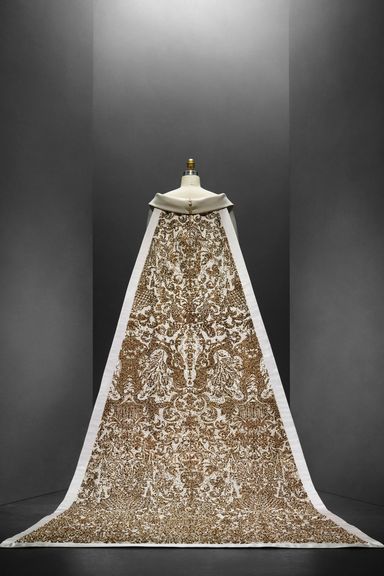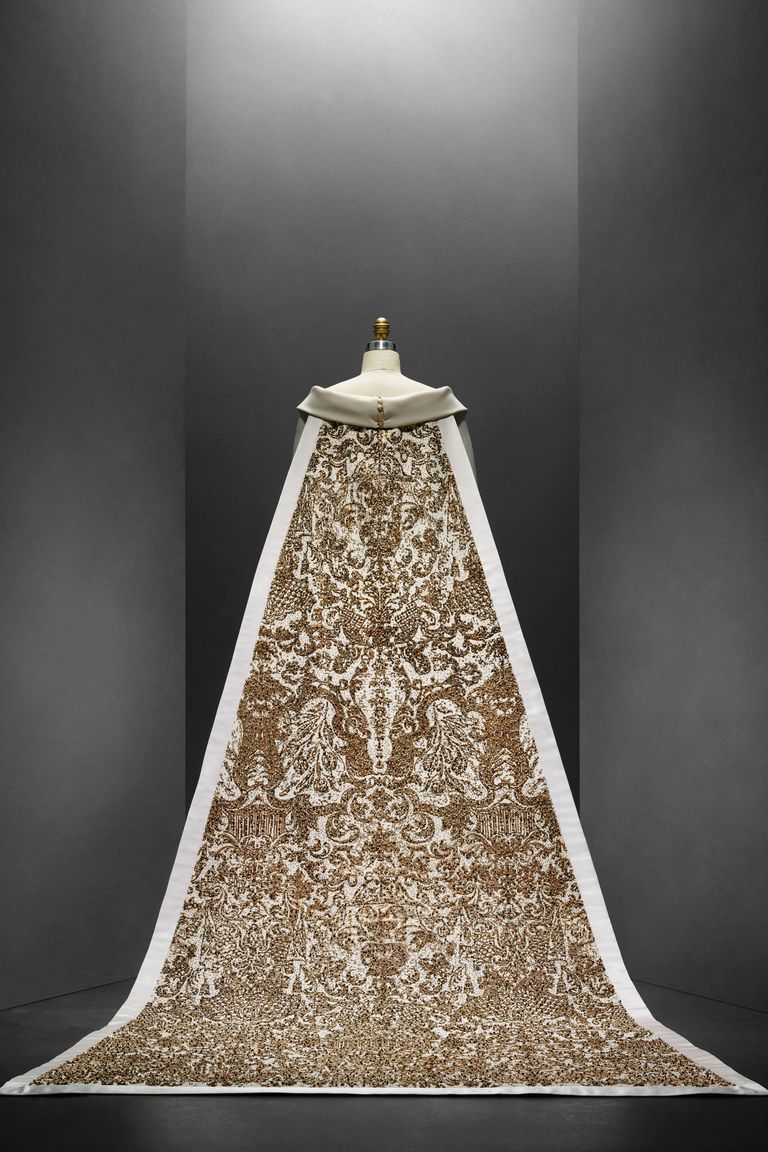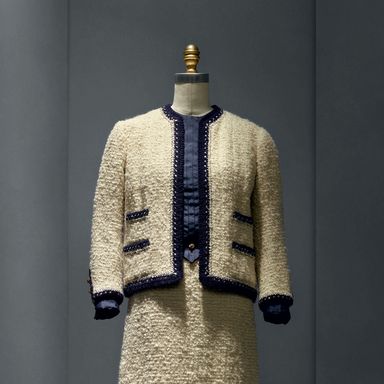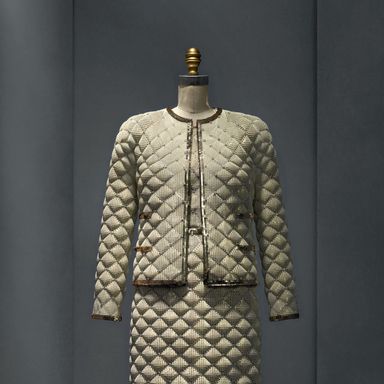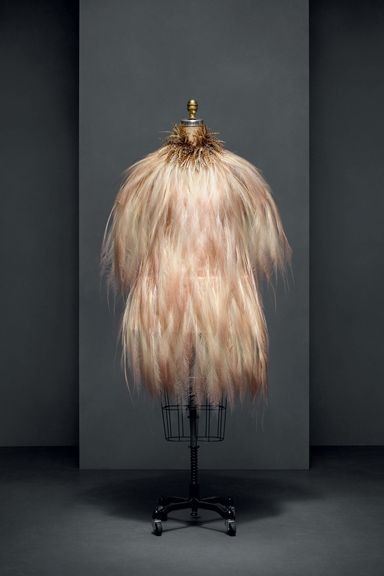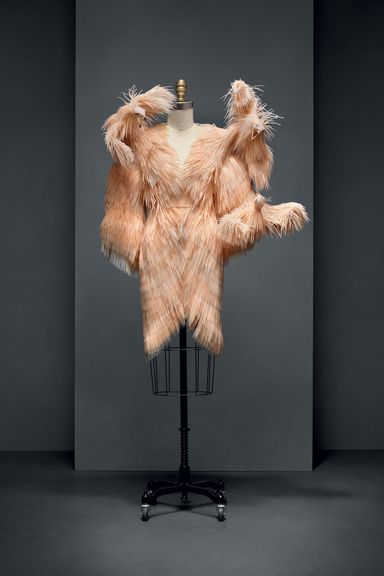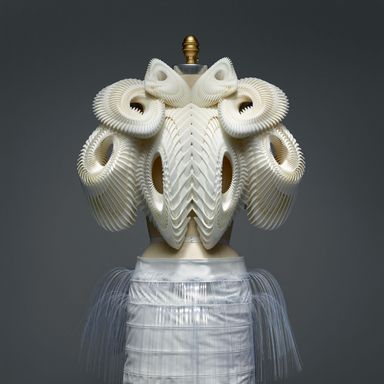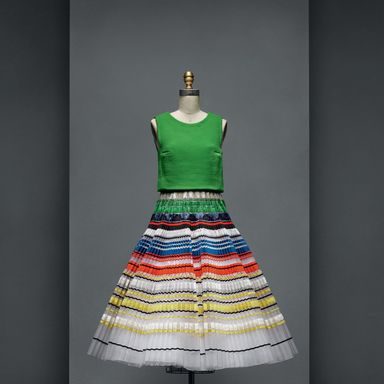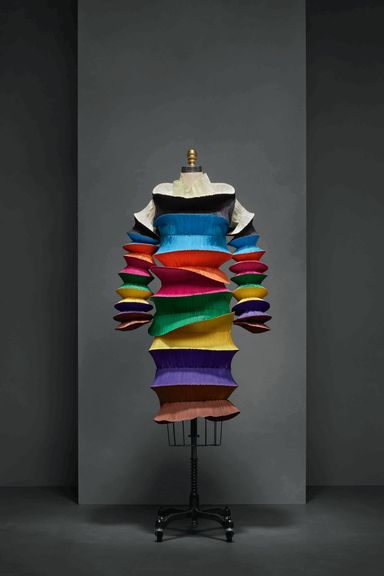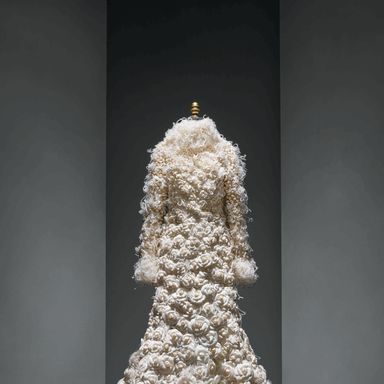Inside the Costume Institute’s Tech-Inspired Fashion Exhibit
From a 19th-century Charles Frederick Worth gown to Chanel couture from this just-concluded season, the Met Costume Institute’s latest exhibit “Manus x Machina: Fashion in an Age of Technology” spans several eras’ worth of technological innovation in fashion. At a press preview of the exhibit, which opens May 5, we spoke to curator-in-charge Andrew Bolton about the crossroads of fashion and tech, the drawbacks of 3-D printing, and why fast fashion scares him.
The show explores the intersection of the machine-made and handmade elements of fashion. Will we ever get to a point where handmade clothes no longer exist? There are so many things that can now be done in an automated fashion — I read something the other day about Adidas using robots in its factories, for example. Do you think the need for human element in design is ever going to disappear?
I don’t think so. I think it’s always going to be present. It’s the humans that are operating the machinery anyway. Machines cannot think for themselves, at the moment, and they’re not capable of human error, which is often a lot to do with creativity in fashion. I feel it’s always going to be the hand and the machine that are operating in tandem.
What about something like 3-D printing, which is transforming the landscape already?
I think what I find the most exciting, and the most disappointing, about 3-D printing, is that at the moment, the future could be extraordinary, in terms of the idea of 3-D printing a dress, in your home, that completely fits your body. It’s like the ultimate couture. [But] we’re nowhere near there at the moment because the materials aren’t relevant or practical for fashion or the body. What’s disappointing, a little bit, is when designers use 3-D printing, they’re using it to emulate traditional fashion like a skirt, a jacket, a dress. I wonder where the 3-D printing can be used in a different way that it completely rethinks what we mean by fashion.
That, to me, is what Iris van Herpen is doing.
I think so, too. It doesn’t function as fashion because they’re exoskeletons; they exist as carapaces on the body. To me, Iris’s approach is the most advanced, because the future of fashion to me is about collaboration, and collaborating with other specialists, who can then bring a new angle to fashion. So the fact that she collaborates with scientists, computer programmers, architects, artists, I really think that’s the future of fashion, because they will both inform each other, creating a paradigm for fashion.
It’s interesting to see the Chanel 3-D-printed suit in the exhibit, to see high-tech overlaid with couture. Karl Lagerfeld embraces what is new in such a voracious way.
When I was interviewing him, I asked him, “What precipitated you doing 3-D printing?” and he said, “Oh Andrew, fashion is all about opportunity, and I’m an opportunist.” It was such a Karl statement.
Because of copying and knockoffs, there is more of an emphasis on craftsmanship and hand details on the part of certain designers because it’s harder to knock off and it’s harder to mass-produce. Do you think that there’s going to be an increasing return to craftsmanship, to detail, along the lines of Alessandro Michele and what he’s doing with Gucci now?
I think you’re seeing it a lot in fashion now. So if you think about Sarah Burton [of McQueen], there are so many designers who are almost fetishizing fashion. I was at a Valentino couture show, followed by a ready-to-wear show, and [the difference] is almost imperceptible. To me, one of the most interesting areas to explore at the moment is the gap between haute couture and ready-to-wear. I think that’s the space that has so much opportunity for designers, and it gives them more autonomy from the fashion system, so it allows them to rethink their process. So to me, that’s the area I find most interesting, trying to get rid of all those categories, which, to me, are becoming less and less relevant because both categories are borrowing from each other. I think that the gap is actually narrowing between high-end [ready-to-wear] and haute couture. Fast fashion scares me; I mean the idea that people can have fashion 24/7. It’s just disposable fashion. I really believe fashion is an art form, and you need time to create it, to think about it, reflect on it, and fast fashion doesn’t know how to do that. So fast fashion is the dystopian vision of fashion.
A lot of people are comparing what Burberry and Tom Ford and all of these other designers are doing with showing see-now, buy-now collections to what Yves Saint Laurent did when he started Rive Gauche, and his elevation of ready-to-wear. Do you think those kinds of revolutions are going to continue, with people throwing out parts of the fashion system that have become outdated by social media and the internet?
I think social media is having the biggest impact on fashion. It’s not the technologies making the fashion; it’s more of the production and the reception of fashion where social media is having the biggest impact. And it’s exciting. Often fashion is the first art form to reflect innovations in technology and its practice and its reception. I love the democracy of technology and how technologies allow people to see fashion, I love that, it’s no longer just a certain group of people, editors or couture clients, who are seeing fashion. Everyone is seeing it and everyone is appreciating it. It worries me that it’s become so big, its popularity may be its downfall, but I love the fact that technology is increasing the reception of fashion.
What was the most interesting thing you learned while putting this together?
To me, the most interesting thing was the mythology of the couture. When we were going through couture pieces in the museum, you realize that Saint Laurent’s Mondrian dress was all machine-sewn. Even as early back as Charles Frederick Worth, the garments were machine-sewn — so to me, that was the most surprising, the role the machine plays within the haute couture.
This interview has been edited and condensed.
